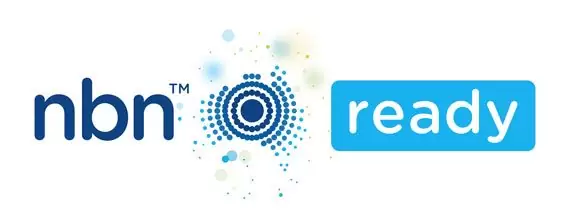Setting up cloud phone systems in Sydney: A step-by-step guide
Cloud phone systems have emerged as a game-changer, offering flexibility, scalability, and cost-effectiveness. For businesses in Sydney looking to upgrade their telecommunications infrastructure, cloud phone systems present an excellent solution.
According to a recent study by Gartner, 85% of companies will have moved to cloud-based systems by 2025. This statistic highlights the growing trend towards cloud-based solutions, including telecommunications. Additionally, a report by MarketsandMarkets predicts that the global cloud-based contact centre market will reach USD 84.4 billion by 2029—a significant growth from USD 26.2 billion in 2024. These figures underscore the importance of adopting cloud-based systems for businesses of all sizes.
But for your business to truly reap the benefits that cloud phone systems in Sydney offer, you must understand how to set up your cloud phones for a better experience. Let’s take a closer look.
A step-by-step guide to setting up cloud phone systems in Sydney
Step 1: Assess your business needs and choose a provider
The first step in setting up cloud phone systems in Sydney is to evaluate your business requirements and select an appropriate provider. Consider factors like the number of users, call volume, required features, budget constraints, and integration needs with existing systems.
There are many cloud phone system providers in the market so it’s important to compare their offerings, reliability, customer support, scalability options, integration capabilities, and pricing structures to ensure you’re getting the best system.
Ask for demos or free trials to test the systems before deciding. This assessment will ensure you choose a solution that aligns with your business goals and provides the necessary functionality to improve your communication infrastructure.
Step 2: Prepare your network infrastructure
Once you've selected a provider, assess and prepare your network infrastructure for the new cloud phone system. Start by evaluating your internet connection. Cloud phone systems rely heavily on a stable and robust internet service so it’s important to ensure you have a connection that can support your new phone system. Ensure that your Sydney office has sufficient bandwidth to support voice calls, and consider implementing a backup internet solution to prevent downtime.
Next, examine your network infrastructure to determine if any upgrades are needed. This may include upgrading to PoE (Power over Ethernet) switches, implementing QoS (Quality of Service) settings on your router, or setting up VLANs (Virtual Local Area Networks) to prioritise voice traffic. Consult with your IT team or a network specialist to optimise your infrastructure for cloud phone systems, ensuring smooth operation and high call quality.
Step 3: Set up user accounts and configure hardware
With your infrastructure in place, the next step is to set up user accounts and configure the necessary hardware.
Work with your chosen provider to create individual user profiles, assign phone numbers and extensions, set up voicemail boxes, and configure call forwarding rules. Ensure each user has the appropriate permissions and features based on their role.
Next, select and configure compatible IP phones or softphones for your cloud phone system. Many providers offer a range of options, from basic models to advanced executive phones. Consider factors like display size and quality, number of line appearances, speakerphone capabilities, and headset compatibility when choosing your hardware. Once you've selected, configure the phones according to your provider's instructions, which typically involves entering account details and network settings.
Step 4: Implement call routing and train your staff
The fourth step involves setting up your call routing system and providing comprehensive training to your staff. Configure your call routing and Interactive Voice Response (IVR) to direct incoming calls. This includes setting up a main greeting, creating menu options for different departments, establishing business hours and after-hours routing, and configuring voicemail settings. Customise these settings to reflect your business structure and ensure callers can easily reach the right person or department.
Once your system is configured, focus on training your Sydney-based team on how to use the new cloud phone system. Cover topics like basic call handling, accessing voicemail, using advanced features like call transfer and conference calls, and troubleshooting common issues. You can create user guides or video tutorials for future reference, ensuring your team can fully leverage the new system’s capabilities.
Step 5: Test, optimise, and maintain
The final step in setting up cloud phone systems is to thoroughly test the system, optimise its performance, and establish a maintenance routine. Before going live, conduct comprehensive testing to ensure everything is working correctly. This includes making test calls to all extensions, verifying call quality, testing advanced features, and checking integrations with other business systems.
Address any issues or concerns before fully transitioning to the new system. Once your cloud phone system is up and running, regularly monitor its performance and gather user feedback. Stay in touch with your provider for software updates, security patches, and new feature rollouts. Continuously optimise your system to ensure it meets your evolving business needs. Remember that the transition to a cloud phone system is an ongoing process, so be prepared to adjust your setup as your business grows and technology advances.
Embracing the future of business communication with cloud phone systems in Sydney
Setting up cloud-based phone systems is a strategic move that can significantly enhance your business communication capabilities. By following this step-by-step guide, you'll be well-equipped to implement a robust and efficient cloud-based phone system that meets your unique needs.
FAQs
Can I keep my existing phone numbers if I move to a cloud-based phone?
Yes, in most cases, you can retain your existing phone numbers when transitioning to a cloud phone system. This process is called number porting. Most cloud phone system providers in Sydney offer number porting services, allowing you to transfer your current numbers to the new system. However, check with your chosen provider about the porting process and any associated fees.
How secure are cloud phone systems for business use?
Cloud phone systems can be very secure when implemented correctly. Reputable providers use encryption protocols to protect call data and often have multiple layers of security measures in place.
What are the main benefits of cloud phone systems for small businesses?
Cloud phone systems offer numerous advantages for small businesses, including increased flexibility, scalability, and cost-effectiveness. They allow employees to work remotely, scale up or down based on business needs, and reduce hardware and maintenance costs associated with traditional phone systems.



